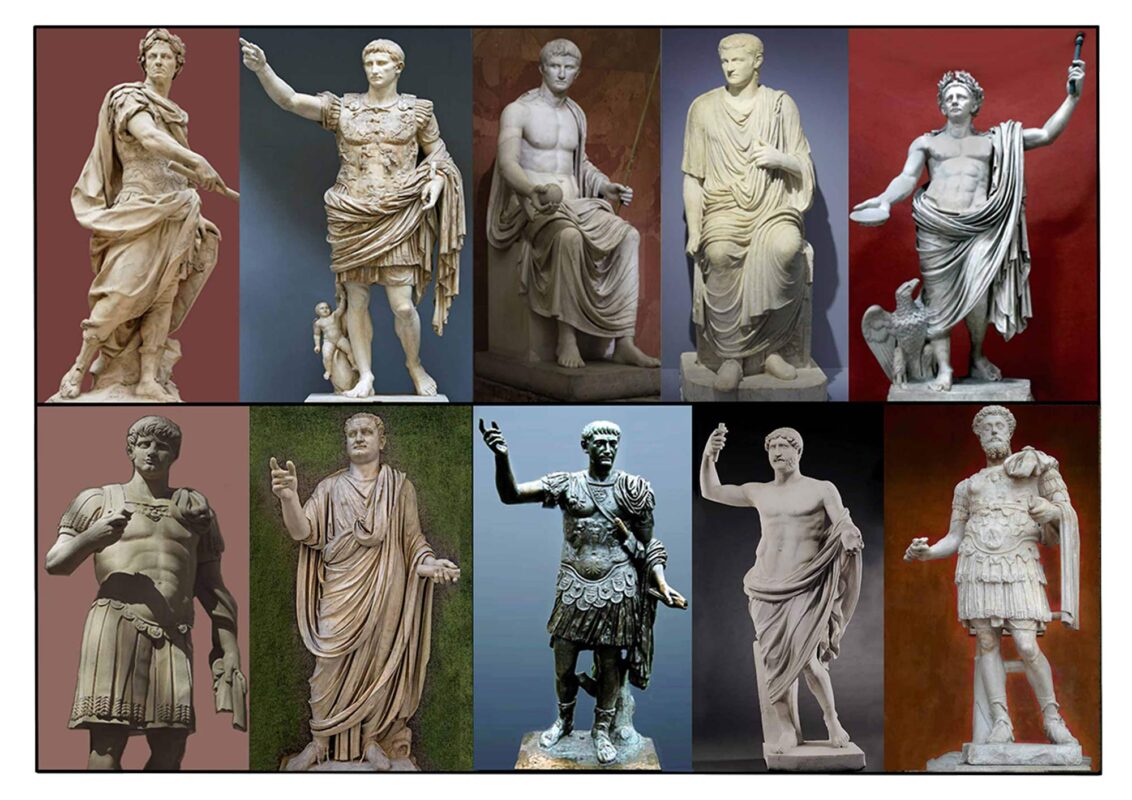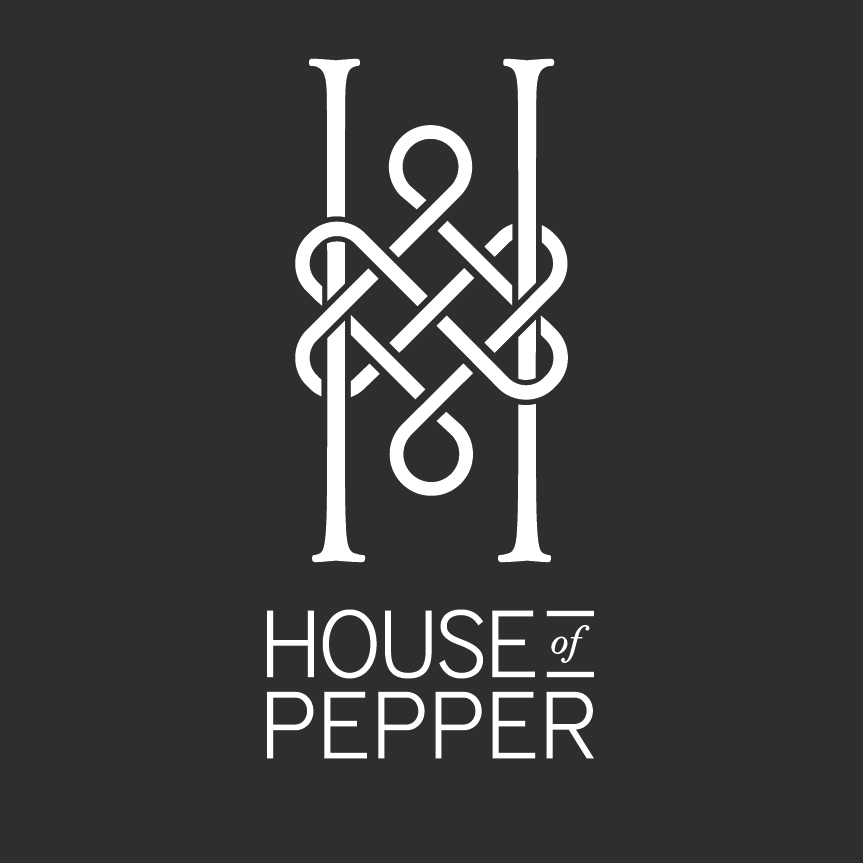Rome and the Crushing of Celtic Art
Rome and Classical Art are celebrated and represented as the birthplace and centre of Western Civilisation. As a result, other cultural achievements are either ignored or dismissed. For an extended period sadly, Celtic art was hidden and crushed.

Juluis Caesar
When we think of Rome we think of the Empire and Emperors. We think of the time before the Empire when Julius Caesar as a Consul was one of two advisors leading the Senate and government. Rome in those days was a Republic. After Caesar, Rome became an Empire and Emperors with huge armies marched across Europe to invade and take over new territories. It was a war machine mostly on foot and with thousands of soldiers marching in tidy military lines in boots and helmuts across Europe.
A long time before Odoacer conquered Rome, Julius Caesar was betrayed and murdered by the Senators. Augustus, known as Octavian, his stepson, was the first Emperor of the new Roman Empire.

Roman Emperors from the first and second century
From top first. Left to right Top: Julius Caesar, Augustus (Octavian), Tiberius, Gaius Caligula, Claudius. Bottom: Nero, Titus, Trajan, Hadrian, Marcus Aurelius.
Only a few early emperors are shown in the image above.
These are Classical style statues that turn Generals into heroes and Gods. We look up to the men on plinths and this gives them a visual dynamic of power. They are often larger than life and we are small. The perfection and idealisation of the human figure in marble and stone makes them immortal. Classical art reinforced the triumph of war by erecting statues of the emperors.
The Roman legions, many of whom were soldier slaves in the Auxiliary were tired after endless battles. They wanted a better life and rewards like land for themselves. The western Roman Empire based in Italy finally collapsed in 476 AD with the sacking of Ravenna. It was sacked by the united Barbarian (Germanic) tribes led by Odoacer (Odovaker). A new era of history began and Classical art went underground for the next one thousand years in the Middle Ages. The old Empire shifted and survived in Constantinople in the east and Christianity was legalised.
Classical Art centered around the human figure. The Romans were influenced and mostly copied Greek ideas and art. The Greeks were poets and philosophers whereas the Romans were more technical and like the armies were disciplined and mechanical. It was an art of the conservative ruling classes, and it was photo realistic and straightforward. (These ideas are from Simon Schama, BBC documentary Civilisations Series following on from the earlier Kenneth Clark Civilizations series).
The Middle Ages
The change and breakaway from Classical thinking is also called the Dark Ages (500 to 1500 AD) or Early Middle Ages by historians. It began with the Fall of Rome in 476 AD and lasted for about one thousand years. When the western Roman Empire collapsed in Italy the old Empire continued in the East and art and culture moved in a different direction. Byzantine and Romanesque art developed.
In the Middle Ages wars and chaos were triggered in Europe for centuries. There was no centralized power or government to rule over Europe and around the Mediterranean fringe as before. The old Empire had expanded and contracted. Now ancestral people reclaimed land, migrated, and spread further over Europe, something the Romans had done themselves. Europe was unsettled for a long time and the monasteries became centres of learning.
Rome as the capital was sacked twice, first by the Visigoths led by Alaric in 410 AD and second by the Vandals in 455 AD. Rome was plundered and mostly destroyed.
The Fall of Rome
On the third occasion in this fifth century, Rome was taken over by Germanic tribes led by Odoacer (Odovakar) in 476 AD. The plundered imperial city had moved to Ravenna and the huge Roman Empire was split in two as East and West. It was decided that both Empires have only one Emperor resident in the east at Constantinople (Istanbol). A deal was made. Italy no longer had an Emperor but a King with Odoacer now in command of government in the Western part of the old Empire. In the East at Constantinople a residue of the Empire survived as the Byzantine Empire.

Odoacer leader of the Visigoths
My drawing of Odoacer is an adaptation taken from an Illustration from 1880 of Odoacer deposing Romulus. The helmet has wings and reminds me of a modern-day Super Man with a cloak and bare legs.
Romulus Augustus was the last Roman Emperor; he was sixteen and a puppet for his father Orestes. Odoacer deposed Romulus. Odoacer became a popular King and ruled the old Western Empire for another seventeen years.
European Tribes
The Romans called the travelling Germanic tribes Barbarians. Barbarian refers to non-Latin or Greek speaking people from outside the Empire. The main barbarian tribes were the Celts, the Franks, Vandals, Ostrogoths, Visigoths and later the Huns who drove the Goths from the North. Europe was unsettled for a long time.

European Tribes and the Roman Empire 100 – 500 AD
Wikimedia Map of the “barbarian” invasions by the Angles, Saxons, Jutes, Franks, Goths, Visigoths, Ostrogoths, Huns and Vandals of the Roman Empire showing the major incursions from 100 to 500 CE.
It was the Italian scholar Petrarch who labelled this period as a Dark Age, as opposed to the light of the Classics. The darkness for many however, was the slow rise in power of the Roman Catholic Church, the emerging feudal system, and the Bubonic Plague which killed millions. The Church became more powerful than the State and the Pope rose to the top of the power pyramid.
The Dying Gaul-Classical Sculpture
I have included The Dying Gaul (Galatian Celt) to show readers what classical art is. It is an ancient Roman marble that is a copy of a Hellenistic work from the third century of Antique Art.

The Dying Gaul, or Galatian Celt, a Roman marble copy of a Hellenistic work of the late third century BC Capitoline Museums, Rome
The original is lost and thought to be a bronze sculpture. It shows the Roman style of classical realism and the heroic element. We can see the Celtic hairstyle, the moustache, the torque and the sword puncture and bleeding wound and the physical perfection of the body. The Celts did not like to die lying down and so he sits on his shield with his sword beside him and accepts his fate to his last breath. It is an intense, moving, and beautiful work. The sculptor has caught the muscles losing power and the personal courage and strength of the dying Celt. It is not surprising that this classical period was revived when we see beauty and skill like this. It is, of course, captured by an artist, someone who has great compassion, awareness, and talent. The creativity of so few can raise the spirit of so many.
Revival of Classical Art
Classical Art rose again after a thousand years and claimed higher learning with the rise of the Renaissance and the later Baroque period (1400 to 1600 AD). The Church benefited by supporting projects to adorn great churches and cathedrals to seduce and draw people into the faith. The Church even charged a fee for the salvation of the soul- better known as a ticket to heaven. People lived in fear of hell and they were illiterate, starving and poor. This incredible corruption by the Church eventually led to the Reformation. Martin Luther questioned the integrity of the Church.
Celtic Art, which was around at the same time, was called animal art. This was an art that did not focus on the perfection of the human form in sculpture or painting. Celtic designs and patterns were abstract and free flowing, geometric and curvilinear and the motifs and symbols were developed from nature and abstracted from the beauty of life around them. There was a sense of harmony and balance. The art grew on ornaments, jewellery, shields, sword handles and scabbards, helmuts and many other loved items in the form of designs as decorations. These designs, however, were not just decorative because they grew out of the elements of art itself. Elements that in the visual vocabulary refer to space, line, shape, balance, rhythm, harmony, and the relationship of all these art elements to each other. It was far removed from the photo realism of observation art and the ideas of perspective and the formal rules of Classical correctness and proportion of Roman Classical art.
The differences at the heart of Celtic Art was an attitude that focused on the art itself. Classical Art was about the power and authority it could exert over others.
